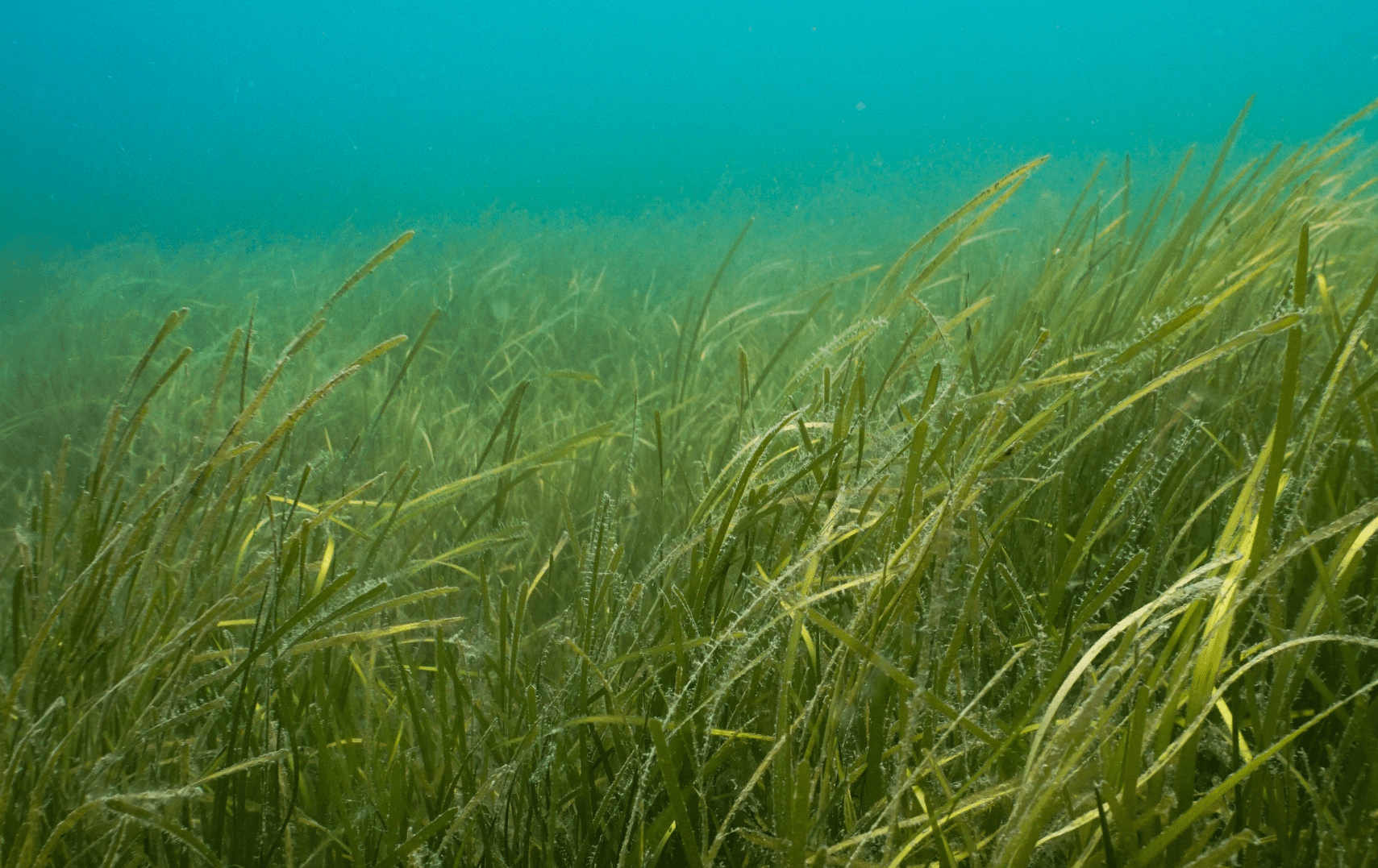Seagrass Restoration: New Projects Along The Scottish Coast

Table of Contents
The Importance of Seagrass Ecosystems in Scotland
Seagrass meadows are vital to the health of Scotland's coastal waters, offering a multitude of benefits. Their restoration is paramount for a sustainable future.
Biodiversity Hotspots
Seagrass meadows are incredibly biodiverse, providing essential habitat for a wide range of species. They are often referred to as the "nurseries of the sea".
- Supports commercially important fish stocks: Species like cod, plaice, and sea bass utilize seagrass beds as feeding and spawning grounds, supporting Scotland's valuable fishing industry.
- Nursery grounds for juvenile fish and shellfish: The dense vegetation offers protection from predators for young fish and shellfish, ensuring the continuation of healthy populations.
- Provides food and shelter for a wide range of invertebrates: Numerous crustaceans, mollusks, and worms find refuge and sustenance within seagrass meadows, contributing to a complex and thriving food web.
Carbon Sequestration Powerhouses
Seagrasses are exceptionally efficient at capturing and storing atmospheric carbon dioxide – a process known as "blue carbon" sequestration. This makes seagrass restoration a powerful tool in the fight against climate change.
- “Blue carbon” ecosystems are critical in carbon offsetting initiatives: Seagrass meadows sequester carbon at a rate far exceeding many terrestrial forests, making them crucial in achieving carbon neutrality goals.
- More effective at carbon sequestration than many terrestrial ecosystems: The high rate of carbon burial in seagrass sediments makes them significantly more effective at carbon capture than many other ecosystems.
- Significant potential for carbon capture in Scottish coastal waters: The extensive Scottish coastline presents a significant opportunity to enhance carbon sequestration through large-scale seagrass restoration projects.
Coastal Protection and Erosion Control
Seagrass beds play a crucial role in protecting Scotland's coastlines from erosion and storm damage. Their root systems stabilize sediments and reduce the impact of wave action.
- Acts as a natural buffer against wave energy: The dense vegetation dissipates wave energy, reducing erosion and protecting coastal infrastructure.
- Reduces sediment resuspension, improving water clarity: Seagrass roots help stabilize sediments, preventing them from being stirred up by waves and improving water quality.
- Protects coastal infrastructure and communities from erosion: By reducing erosion, seagrass beds protect valuable coastal properties, infrastructure, and communities from damage.
New Seagrass Restoration Projects in Scotland
Several exciting seagrass restoration projects are underway across Scotland, employing various techniques to revitalize these vital ecosystems.
Project Location and Methodology
Several initiatives are underway, each with unique approaches and locations.
- Project A: Loch Lomond Restoration Project: This project focuses on reintroducing seagrass to areas within Loch Lomond that have experienced significant decline. The methodology involves transplanting seagrass shoots from healthy areas to degraded sites. Expected outcomes include increased seagrass cover, improved water quality, and enhanced biodiversity.
- Project B: Firth of Forth Seagrass Initiative: This large-scale project utilizes seed dispersal techniques to recolonize areas of the Firth of Forth. The project aims to restore significant areas of seagrass meadow, improving habitat for various species and enhancing carbon sequestration. Expected outcomes include increased seagrass cover and improved biodiversity within the Firth of Forth.
- Project C: The Orkney Islands Seagrass Project: This project is focused on restoring seagrass beds in sheltered bays around Orkney. The methodology involves a combination of seed dispersal and transplanting, tailored to the specific conditions of each site. Expected outcomes include enhanced biodiversity, improved water quality, and increased coastal protection.
Funding and Partnerships
These ambitious projects rely on a collaborative effort between various organizations and funding bodies.
- Government grants and initiatives: The Scottish Government provides funding and policy support to encourage and facilitate seagrass restoration projects.
- Private sector partnerships and corporate social responsibility: Several businesses are contributing financially and through in-kind support to these initiatives.
- Community involvement and volunteer programs: Local communities are actively involved in many projects, contributing to monitoring, planting, and raising awareness.
Monitoring and Evaluation
The success of these projects is closely monitored to ensure effectiveness and inform future initiatives.
- Regular surveys to assess seagrass growth and biodiversity: Scientists conduct regular surveys to track seagrass growth, assess biodiversity, and monitor changes in water quality.
- Data analysis to track progress and identify challenges: Data is analyzed to evaluate progress and identify any challenges or obstacles hindering restoration efforts.
- Adaptive management strategies based on monitoring results: The data collected informs adaptive management strategies, allowing for adjustments to optimize project effectiveness.
Challenges and Future Directions for Seagrass Restoration in Scotland
Despite the significant progress, challenges remain in ensuring the long-term success of seagrass restoration efforts.
Threats to Seagrass Meadows
Several factors threaten the health and survival of seagrass meadows.
- Pollution from agricultural runoff and sewage: Nutrient pollution from agricultural runoff and sewage can lead to algal blooms, smothering seagrass beds and reducing water clarity.
- Damage from boat anchors and propellers: Boat anchors and propellers can cause significant damage to seagrass beds, leading to habitat loss and fragmentation.
- Impacts of climate change on seagrass health and resilience: Increased water temperatures and ocean acidification are expected to negatively impact seagrass health and resilience.
Technological Advancements
Technological innovations are enhancing seagrass restoration efforts.
- Drone technology for monitoring seagrass growth: Drones equipped with specialized cameras allow for efficient and accurate monitoring of seagrass growth and distribution.
- Innovative methods for seed collection and dispersal: Researchers are developing innovative techniques for collecting and dispersing seagrass seeds, increasing the efficiency and success rate of restoration projects.
- Development of resilient seagrass varieties: Scientists are investigating ways to develop seagrass varieties that are more resilient to climate change impacts.
Policy and Legislation
Effective policies and regulations are essential for protecting and restoring seagrass habitats.
- Marine Protected Areas (MPAs) and their importance: Establishing MPAs can offer crucial protection for seagrass beds, restricting activities that could damage these sensitive ecosystems.
- Regulations to reduce pollution and protect seagrass beds: Stricter regulations on pollution from agricultural runoff and sewage are crucial to safeguarding seagrass habitats.
- Future policy recommendations to support seagrass restoration: Continued investment in research, monitoring, and restoration projects, along with stronger protective measures, are essential for the long-term success of seagrass restoration efforts in Scotland.
Conclusion
Seagrass restoration is proving to be a vital undertaking for Scotland’s coastal ecosystems. The new projects highlighted demonstrate the commitment to protecting biodiversity, combating climate change, and enhancing coastal resilience. These initiatives offer a beacon of hope, showcasing the potential for restoring vital marine habitats and building a more sustainable future. By continuing to invest in seagrass restoration projects and implementing effective conservation measures, Scotland can ensure the long-term health and prosperity of its precious coastal environments. Learn more about how you can support seagrass restoration efforts in Scotland and become involved in protecting this vital ecosystem. Consider volunteering for local projects or donating to organizations dedicated to seagrass conservation in Scotland.

Featured Posts
-
 Predicting The Ufc 314 Co Main Event Chandler Vs Pimblett
May 04, 2025
Predicting The Ufc 314 Co Main Event Chandler Vs Pimblett
May 04, 2025 -
 Corinthians X Internacional Guia Completo Ao Vivo Horario E Escalacoes
May 04, 2025
Corinthians X Internacional Guia Completo Ao Vivo Horario E Escalacoes
May 04, 2025 -
 Deiveson Figueiredo Vs Cory Sandhagen Ufc Des Moines Main Event Set For May 3rd
May 04, 2025
Deiveson Figueiredo Vs Cory Sandhagen Ufc Des Moines Main Event Set For May 3rd
May 04, 2025 -
 Another Shot At Canelo Boxers Ko Win Sparks Rematch Call
May 04, 2025
Another Shot At Canelo Boxers Ko Win Sparks Rematch Call
May 04, 2025 -
 Foxs New Streaming Strategy Peter Distads Leadership Role
May 04, 2025
Foxs New Streaming Strategy Peter Distads Leadership Role
May 04, 2025
Latest Posts
-
 Churchill Downs Renovations Kentucky Derby Prep In Full Swing
May 05, 2025
Churchill Downs Renovations Kentucky Derby Prep In Full Swing
May 05, 2025 -
 Get To Know The Jockeys 2025 Kentucky Derby Contenders
May 05, 2025
Get To Know The Jockeys 2025 Kentucky Derby Contenders
May 05, 2025 -
 Superstar Simone Biles A Special Role At The Kentucky Derby
May 05, 2025
Superstar Simone Biles A Special Role At The Kentucky Derby
May 05, 2025 -
 Kentucky Derby 2025 Meet The Riders Vying For Victory
May 05, 2025
Kentucky Derby 2025 Meet The Riders Vying For Victory
May 05, 2025 -
 Gymnast Simone Biles Kentucky Derby Appearance Details And Significance
May 05, 2025
Gymnast Simone Biles Kentucky Derby Appearance Details And Significance
May 05, 2025
